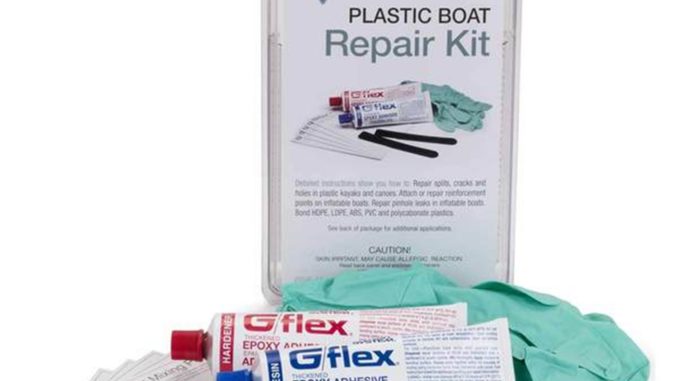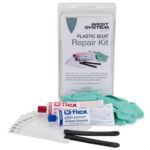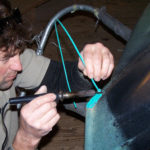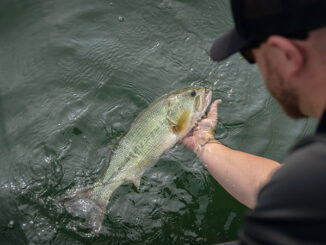
Carry repair kit, tools you might need on water
Afew years ago, while on an extended fishing trip to the coast with some buddies, the chain assembly on my kayak’s pedal-drive system broke. Facing two more days of long runs to the fishing grounds from the put-in, the three of us set out to find some suitable hardware to make repairs, lest the two of them should have to tow my sizeable craft or leave me sitting on the dock.
Having been a child whose primary means of locomotion was a Schwinn bicycle, repairing a broken chain wasn’t a deal breaker — at least until I figured out that the manufacturer of the boat’s drive system wasn’t using parts that were available at the local big-box department store.
Like anything, kayaks that are used on a regular basis will sometimes break. Typically, the more ingenious the design, the harder the boat will be to fix, especially in the field.
After the trip was over, a call to the local manufacturer’s rep really hurt my pride when he asked, “Don’t you have one of our repair kits?”
My response was, “You make a repair kit?”
“Oh yeah, it has spare chain assemblies with sprockets and even a spare fin. It even comes in its own zippered bag for storing in the boat,” he said. “I’ll send you one.”
The lesson learned after that excursion, which resulted in my paddling a 14-foot kayak that wasn’t designed for paddle propulsion,, was to come prepared for “What if?” next time.
As in the above scenario, some emergencies are best remedied with specific manufacturer’s equipment. That might be a good question to ask your local dealer when buying one of the more complex craft that are on today’s kayak market.
Secondarily, the most-likely calamity to face a paddleboat owner is hull repair. A plastic boat in motion tends to give way when it meets a fixed object of greater density and durability, such as a rock, metallic object, oyster bank or even a roadway.
Hull repairs fall into two categories: in-the-field and in-the-shop.
Probably the most-original product for in-the-field hull repair, be it a canoe, kayak, or other floating object, is duct tape. Ol’ Silver has come to the rescue many times, and with the advancements in waterproof adhesives available in the tougher tape brands, it still gets the job done quicker than any other fix.
In a situation where time is available, epoxy resins fit the bill to make amends for at least a couple days, if not longer, so long as you have the ability to let the patch cure before putting it back in the water and under stress.
For longer-term fixes, many kayaks can be plastic welded. Plastic kayaks are made of polyethylene, but not all polyethylene can be repaired. Linear High Density Polyethlyene (HDPE) can be plastic welded. Crosslinked Polyethylene (XLPE) can not.
For the HDPE set, the boat owner or a good repair shop can use a plastic welder and plastic welding rods to repair the crack. For those not wanting to invest in the specialized equipment, home repairs can be made with a handheld torch and some spare strips or pieces of polyethylene.
The best plastic to use is plastic from the kayak itself, from any cutouts you may have saved or other repairs you made in the past. Otherwise, HDPE welding rods are available by order. Note: the same elasticity that allows your boat to flex also makes it extremely difficult to get other materials to bond to it. If you’ve got the skills, go for it. If not, you might want to seek a professional.
The next category of kayak fixes falls into the rigging department. This could range from adjustable seats to rudder steering components. Carrying a small variety of nuts and bolts and/or an aluminum pop rivet gun can be a life saver, though many kayakers still prefer to have duct tape in the boat and the spare hardware in the truck or base camp. Pair this with a small, portable drill if the old rivet has to be retrofitted to make the fix.
Any time you are dealing with cable, especially cable under tension, cable sleeves, clamps and stops are a much better fix than heat shrink or any other type of plastic or textile, including duct tape.
A lot of rigging ills can be mended temporarily with utility cord. A roll of 550 paracord is light, cheap and will resist rot and mold even if it sits in some dark, damp recess of your kayak until needed.
Most manufacturers carry replacement parts for their boats, and so should you. If it’s an item prone to breakage, you’ve probably already fixed it once, so carrying a spare might be a good idea the next time you head out away from the internet or local kayak outfitter.
Finally, one of the most stressed parts of your paddle boat may be the paddle itself. It may or may not break; it may simply get lost. Many paddle brands are now available as two- or even three-piece components that snap or fit together when used and can be broken down and stored until the need arises.







Be the first to comment